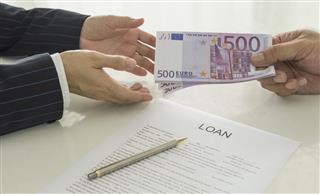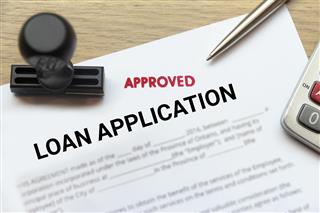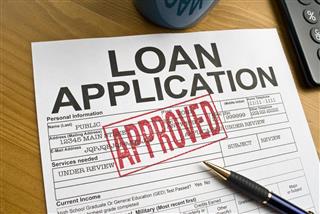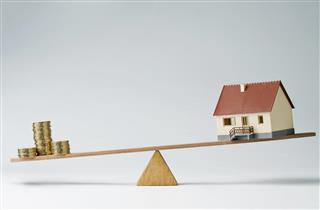
People, who are interested in buying a house with no money down, may benefit from the following options. It is important to understand the dimensions of the methods undermentioned, before you sign on the dotted line.
Buying a house with no money down was easy before the crash of the housing market. There were a number of sellers, who were more than willing to help an aspiring homeowner purchase a home with virtually no down payment. Then, there were piggyback loans that were provided by the primary mortgage lender, or in some cases, the owner of the property, and if none of these avenues were open, the buyer could always consider purchasing Private Mortgage Insurance. Lease to own is a modified form of seller financing that was also available to people with limited finances. The aforementioned options had their pros and cons.
Piggyback loans were the most popular means of financing amongst cash-strapped people, who were desirous of owning a home without making the requisite down payment. Private Mortgage Insurance (PMI) was next in order of popularity. Seller financing — in case of piggyback loans — also became popular as home prices continued to escalate.
Today, piggyback loans are much harder to come by, although some lenders are still willing to consider Private Mortgage Insurance (PMI). In addition to these options, eligible borrowers can avail zero down VA-insured loans and 100% USDA financing. Buyers, financing through state Housing Finance Agencies and certain non-profits, can use the $8000 tax credit for making the down payment on the secondary financing provided by the aforementioned entities for availing a FHA-insured home loan.
Feasible Methods
► Private Mortgage Insurance
No-money-down homes have been made possible by allowing the borrower to procure a mortgage loan that requires private mortgage insurance as an alternative to the requisite down payment. Typically, the expected down payment is 20-25% of the purchase price of the home. PMI makes it possible for a person to obtain a mortgage loan, without paying a dime by purchasing insurance that protects the mortgage lender in the event of the former defaulting on the loan. Of course, the borrower/aspiring homeowner is required to pay insurance premium on a regular basis.
Although the premium is tax deductible, people often preferred piggyback loans to Private Mortgage Insurance, since the amount of insurance premium was generally more than the interest on piggyback loans. However, today PMI is the best bet for a person, who is keen on buying a house with no money down.
► USDA 100% Financing Program
United States Department of Agriculture (USDA) has a loan guarantee program that is better known as Section 502. The Housing and Urban Development Program (HUD) aids in financing buyers who are purchasing a house or a property for the first time. This program specifically is designed for low-income families so that they may own a property without suffering the grind of down payments. It is meant to provide 100% financing to first-time homeowners and people living in structurally unsound homes to help them purchase a home in the targeted rural areas. The best part about these loans, for people who qualify, is that the borrowers do not have to purchase private mortgage insurance even though the loan is a zero-down mortgage. Moreover, the sellers are allowed to finance up to 6 percent of the purchase price of the property in lieu of closing costs. The rate of interest on the zero down mortgage loan is adjustable.
► VA-insured Loans
The U.S. Department of Veterans Affairs (VA) provides eligible veterans, the facility of buying a home with no money down. These loans are known as VA-insured loans and are meant for all veterans as well as active military personnel in the Army, the Navy, the Marine Corps, the Air Force, the Coast Guard, and the National Guard. The best part about these loans is that the mortgage is a 30-year fixed-rate-level payment obligation. Applicants with less-than-perfect credit are eligible to avail zero-down mortgages that can be used to purchase single-family homes, approved condominiums, and townhouses.
► FHA-insured Loans
Although Federal Housing Administration (FHA) insured loans require 3.5 percent down payment, the first-time home buyers tax credit of $8000 and the subsequent legislation, allowing borrowers to monetize the tax credit and apply it toward their home purchase, has resulted in borrowers being able to buy a home without making the necessary down payment. This is because people financing via state housing finance agencies and non-profits can be assisted by the latter with the amount of down payment on an FHA loan, thus providing ample scope for zero-down mortgage loans.
► House Trading
This is one lucrative way of buying a house with no money down. Active investors swear by the policy of trading properties. When one trades one property for another, the investor is also spared of legalities concerning capital gains — a factor that companions the scenario when a property is sold. This, precisely, is one spot-on pro that selling a property offers. Either it is one large property traded for a syndicate of small properties or skipping their city to buy a house in an all-together new town tagging it their holiday home.
► Leasing with an Option to Buy
Renting a property may be accompanied with an agreement stating the option to buy the said property, as well. Under the terms and conditions of registration mentioned, the lessee and the lessor draw up a negotiable amount that ought to be deposited at stipulated time period in lieu of the property being used. Besides, this agreement also inserts a clause that states the disposition of the lessee to purchase the property formerly leased, at a price set during the lease period.
► Federal Programs
Ad hoc programs are arranged in order to facilitate low-income families to own a house. The Rural Economic and Community Development Administration offers loans with humble interest rates. These programs are deemed pro bono efforts to encourage the underprivileged families to acquire a property of their own.
► Piggyback Loans
Prior to the sub-prime crisis, piggyback loans were the most popular means of financing for a person, who was desirous of owning a home without parting with the requisite amount of down payment. Although, the popularity of these loans has declined on account of these loans shouldering much of the blame for the sub-prime crisis, some mortgage lenders, still may be willing to provide no-money-down mortgages.
As per the guidelines issued by Freddie Mac and Fannie Mae, people, who intend to buy a home by availing a home loan are required to down pay 25% of the purchase price of the home. The remaining amount can be borrowed from a primary mortgage lender. However, the borrower can circumvent the 25% down payment by obtaining a second mortgage simultaneously. In other words, the primary mortgage lender provides a loan for 80% of the purchase price, and the second mortgage lender, the remaining 20%. Here, both mortgages are secured with the same underlying house as collateral. The second mortgage piggybacks on the primary mortgage and carries a much higher rate of interest than the primary mortgage.
Traditionally, piggyback loans were 80-10-10, 80-15-5, or 75-15-10 loans. The first figure from the left indicates the percentage of the purchase price funded by the primary mortgage lender, the second figure is the percentage funded by the second mortgage lender, and the final figure is the borrower’s skin in the game. In time, the final figure was reduced to zero and resulted in no-money-down home loans. Thus, the borrower could easily buy a house with no money down. The second mortgage that piggybacked on the primary mortgage was typically provided by the primary mortgage lender, who gained in terms of higher interest rates than those charged on the primary mortgage. In some cases, the second mortgage was provided by the seller/owner of the house. This brings us to the concept of seller financing.
► Seller Financing
Seller financing often accompanied piggybacked loans, since the second mortgage was either provided by the seller, or by the primary mortgage lender. Seller financing involves transferring the title of the house to the buyer in exchange for a note, and the right to foreclose the property in the event of default. The note is pretty much like a mortgage that is paid off as a balloon payment within a period of 5 to 10 years. Since it is a mortgage, the buyer is expected to pay the seller a hefty interest on the loan. The seller, in turn benefits in the form of a high rate of interest on the loan, in addition to a security interest in the house.
Although 100% seller financing is a thing of the past, it may be possible for an aspiring homeowner to down pay less than 20% and still buy a home, if the seller is desperate to get rid of the house.
In the present scenario, lease contract with option to buy is the best option for people, who are interested in buying a home with minimum down payment. By paying as little as 1 to 5% of the price of the property, the aspiring homeowner can acquire the right to buy the house at an agreed-upon price at some point of time in the future. The aspiring homeowner (lessee) can then rent the house for a period of 3 years or so and pay the amount of the rent to the landlord or the lessor. At the end of this period, the lessee can buy the home from the lessor at the predetermined price or may abstain from exercising the option. Considering the present situation, most sellers are persuading aspiring homeowners to enter into a lease contract with option to buy.





